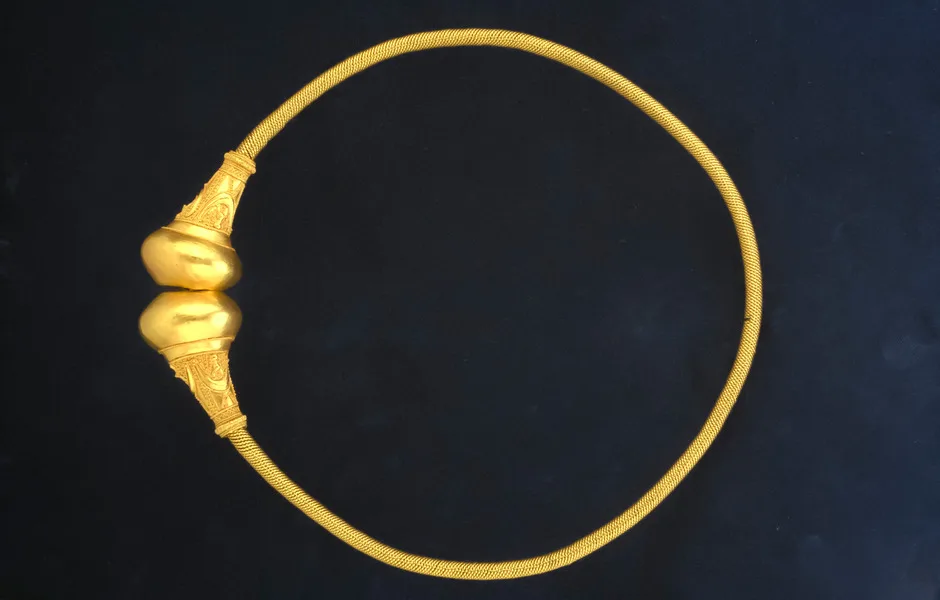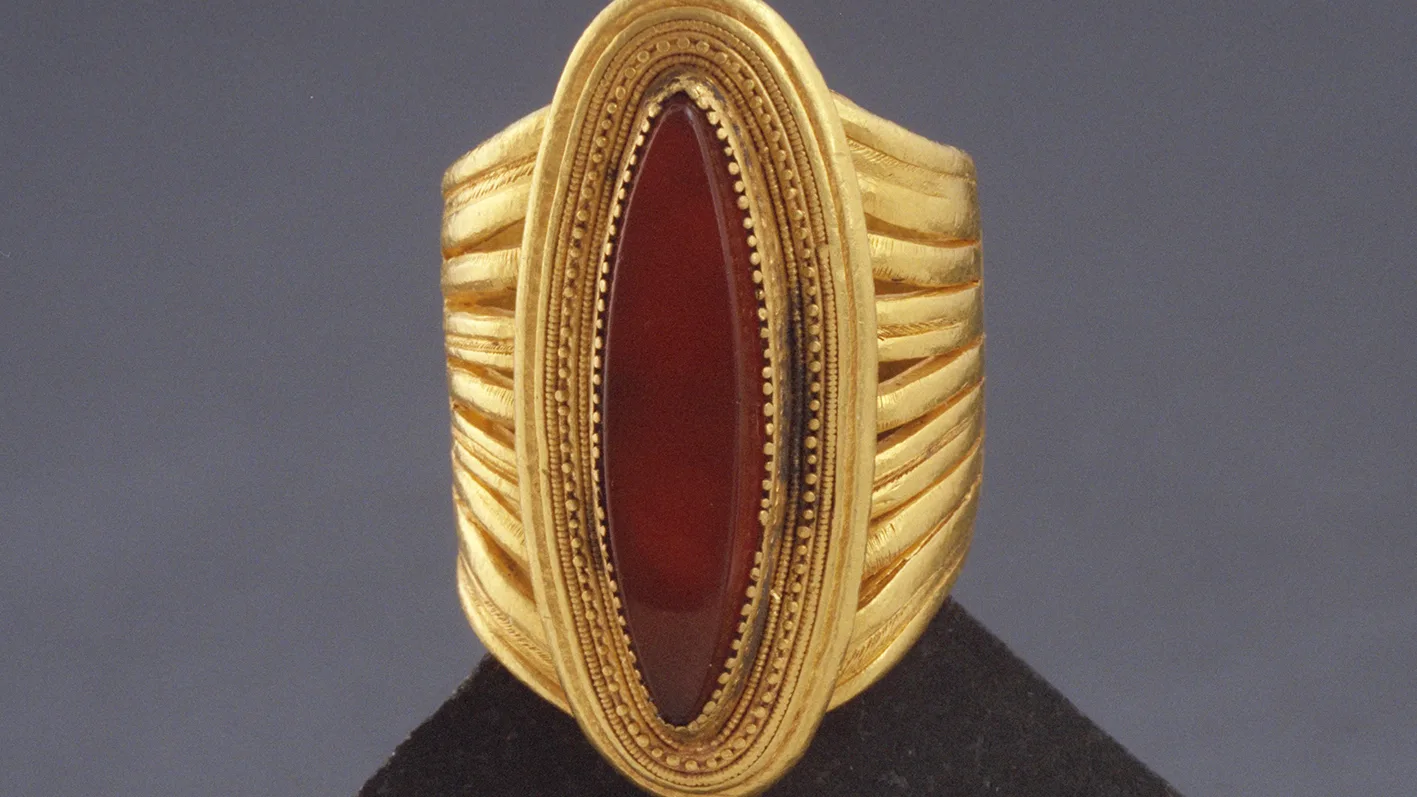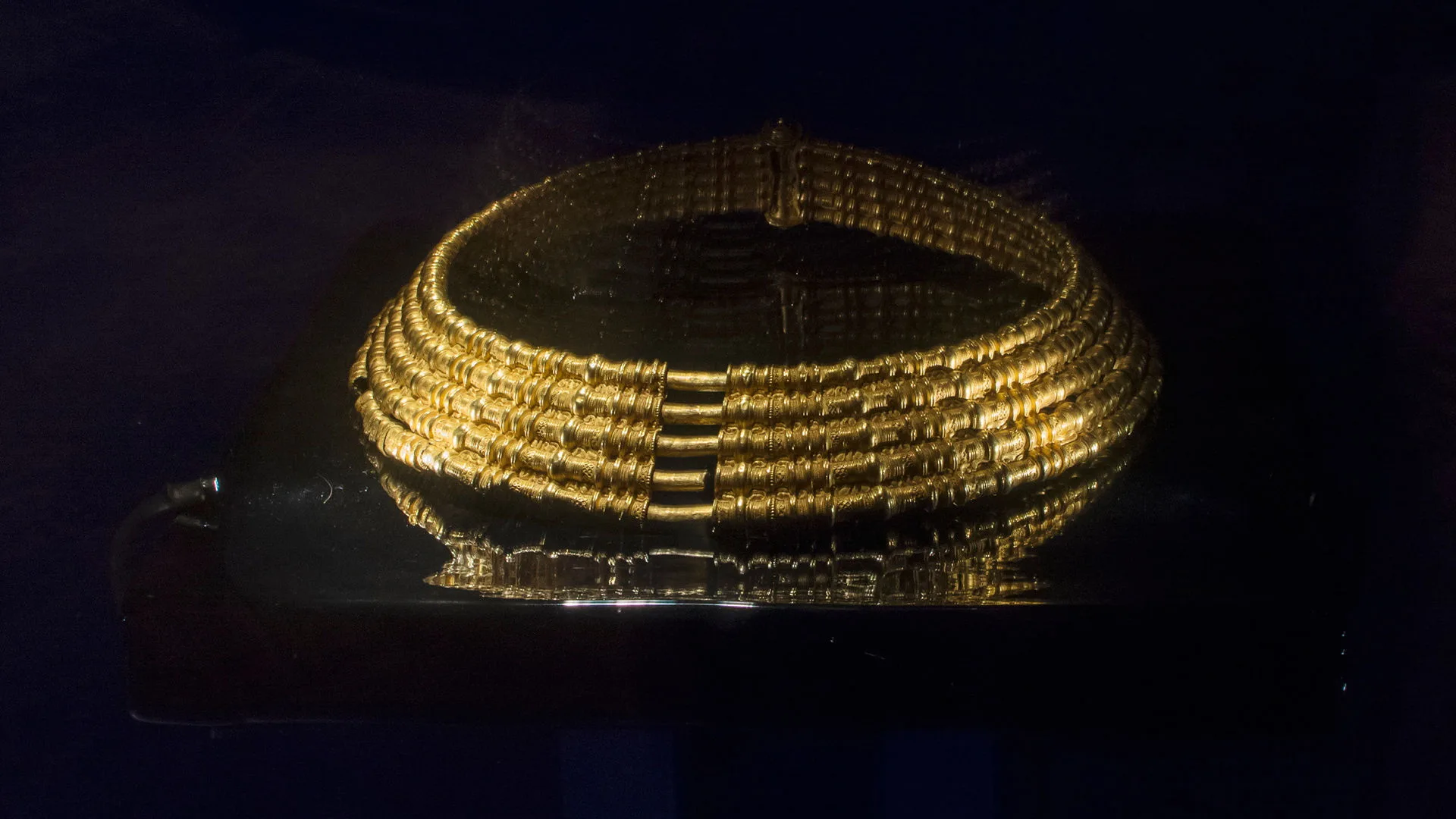Gold objects with foreign inspiration
Bronze Age
1700 BC – 500 BC
Iron Age
500 BC – AD 1100
Viking Age
AD 800 – AD 1100
The method is known as filigree and granulation, and it was widely used in the Mediterranean world at the time. A close study of jewellery found in the North, such as the magnificent neck ring from Havor on Gotland or the similar example from Vittene in Västergötland, reveals that the same techniques were employed as those seen further south.

For instance, the gold wires were made in a comparable way, by rolling or twisting thin strips of gold sheet into thread-like forms. The soldering techniques, too, are identical. These are not skills one can acquire simply by examining a piece of jewellery, especially since the details in question require high magnification to be visible. And the goldsmiths of the time did not have magnifying lenses. So how was it possible?
The rise of chieftain power
The period in which these gold ornaments appear is marked by significant social change in the Nordic societies. We see the emergence of a new aristocratic elite, chieftains who build richly furnished graves and dwellings that stand apart from others in the settlement. It is clear that society was becoming more stratified and that certain individuals were consolidating power.
For these emerging elites, contact with distant regions was vital. Through such connections, they could acquire prestigious objects that helped assert their authority. We see this in their burials, where Roman bronze artefacts are not uncommon. The gold jewellery, too, may be understood in this context. Could it be that Nordic chieftains acquired these pieces via their contacts in continental Europe?
To that question, the answer is a clear no. The jewellery was without doubt produced locally in the Nordic region.
Unwilling immigrants?
It is far more likely that goldsmiths from abroad travelled to the region and established workshops here. Why they did so remains uncertain. Perhaps they came willingly, fleeing unrest in continental Europe. But then again, who is to say they had a choice?
It is entirely possible that they were sent here as gifts, presented to Nordic chieftains to secure alliances or express submission. If they were unfree, this would not be an unreasonable assumption.

Neck ring from Vittene
On view at Historiska museet in the exhibition Guldrummet





